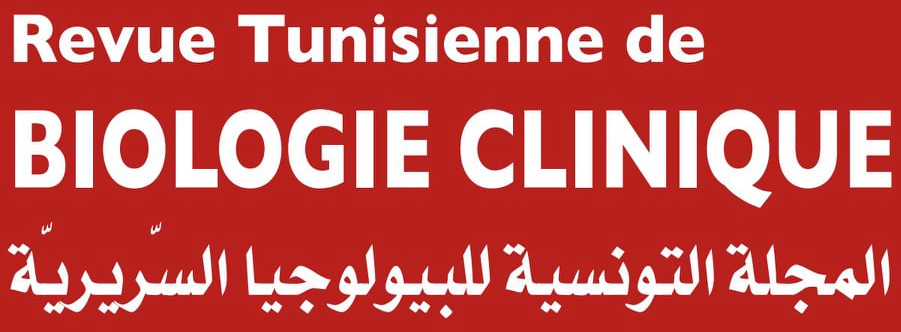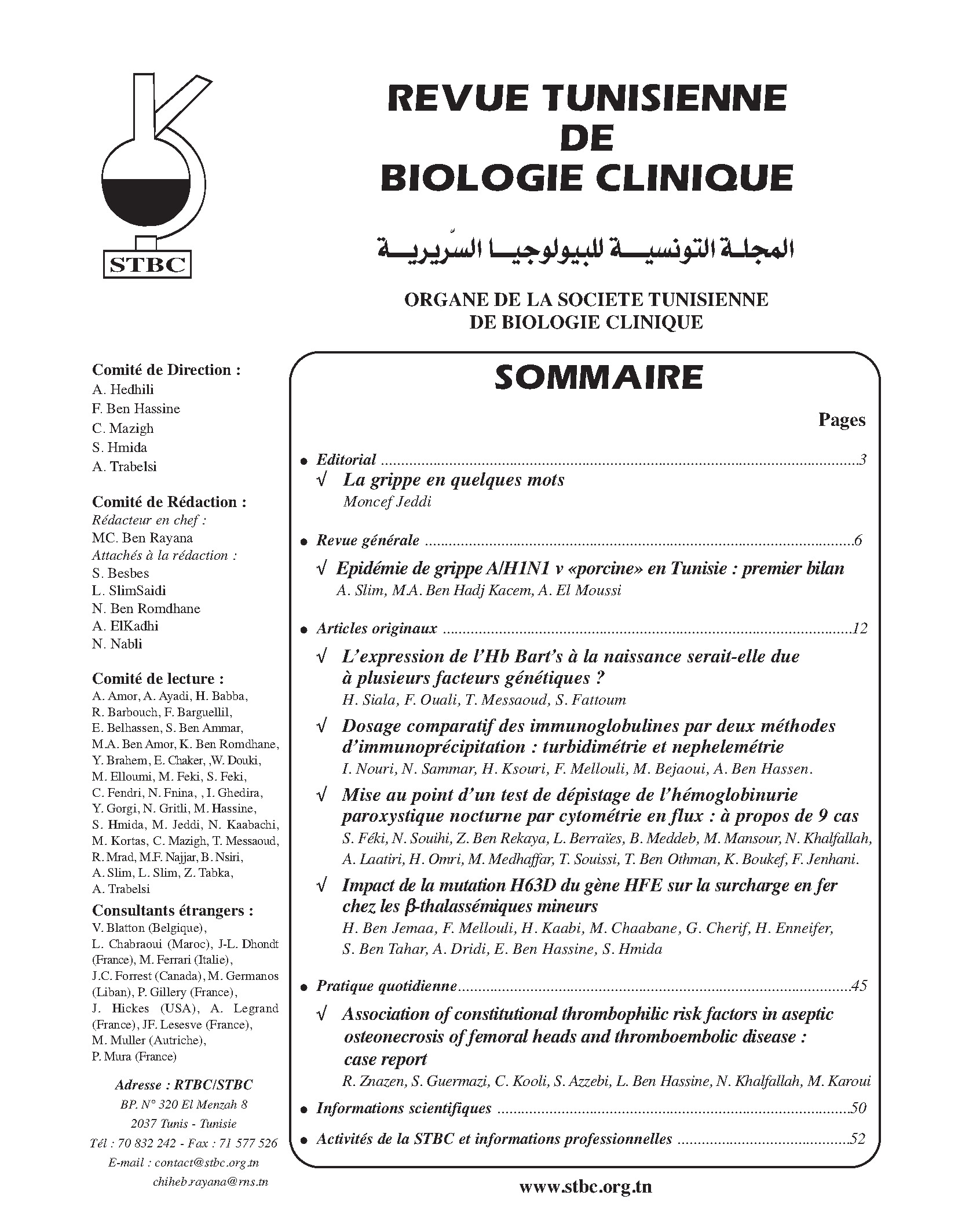Résumé
L’hémoglobinurie paroxystique nocturne (HPN) est une maladie rare dans le monde et dont les données épidémiologiques manquent en Tunisie. Dans ce travail, nous présentons une méthode rapide et peu couteuse pour le diagnostic de l’HPN par cytométrie en flux (CMF) que nous avons mis au point dans notre laboratoire, en nous inspirant des divers travaux décrits dans la littérature tout en les adaptant à la situation économique de notre pays. Notre technique se base sur deux types de cellules du sang périphérique - les monocytes et les granulocytes - qui expriment, respectivement, les protéines GPI-dépendantes CD14 et CD16.
Une stratégie de fenêtrage et d’identification des clones HPN a été basée sur la mesure du pourcentage de cellules CD14- sur la population des cellules CD33bright au niveau de la fenêtre des monocytes ; et la mesure du pourcentage de cellules CD16- sur la population des cellules CD13bright au niveau de la fenêtre des granulocytes.
Grâce à cette technique, nous avons été en mesure de détecter un déficit en ancre GPI pour 9 patients suspectés de HPN mais pour qui le test de Ham-Dacie était négatif, confirmant ainsi la supériorité de la cytométrie en flux par rapport au test de Ham Dacie dans le diagnostic de l’HPN et contribuant à l’établissement des premières données épidémiologiques de cette maladie en Tunisie.

Ce travail est disponible sous la licence Creative Commons Attribution 4.0 International .
(c) Tous droits réservés S. FÉKI, N. SOUIHI, Z. BEN REKAYA, L. BERRAÏES, B. MEDDEB, M. MANSOUR, N. KHALFALLAH, A. LAATIRI, H. OMRI, M. MEDHAFFAR, T. SOUISSI, T. BEN OTHMAN, K. BOUKEF, F. JENHANI 2023


